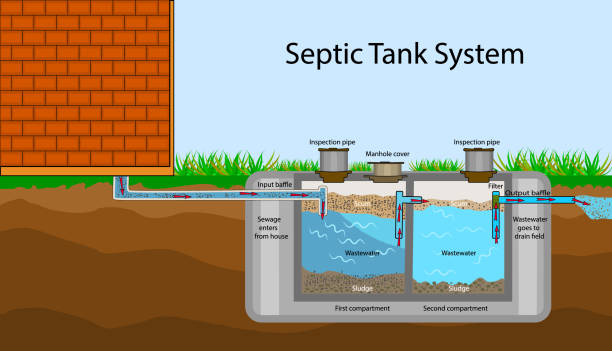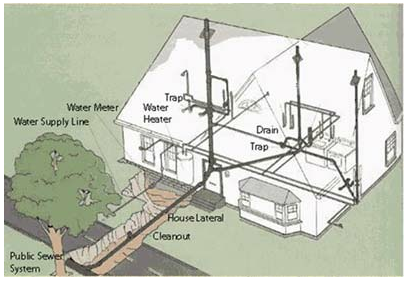The Basics of Your House's Plumbing System Anatomy
The Basics of Your House's Plumbing System Anatomy
Blog Article
Presented here below you will discover lots of exceptional insight in relation to Exploring Your Homes Plumbing Anatomy.

Comprehending just how your home's plumbing system works is crucial for every house owner. From supplying clean water for drinking, food preparation, and bathing to safely getting rid of wastewater, a well-maintained pipes system is crucial for your family members's health and convenience. In this thorough guide, we'll check out the detailed network that makes up your home's plumbing and deal pointers on upkeep, upgrades, and taking care of common problems.
Intro
Your home's pipes system is more than simply a network of pipelines; it's an intricate system that guarantees you have access to clean water and effective wastewater elimination. Knowing its components and exactly how they collaborate can aid you prevent costly repair work and make sure every little thing runs efficiently.
Basic Components of a Plumbing System
Pipes and Tubing
At the heart of your plumbing system are the pipelines and tubes that lug water throughout your home. These can be constructed from various materials such as copper, PVC, or PEX, each with its advantages in terms of sturdiness and cost-effectiveness.
Components: Sinks, Toilets, Showers, and so on.
Components like sinks, commodes, showers, and bath tubs are where water is made use of in your home. Understanding just how these components attach to the pipes system helps in diagnosing problems and planning upgrades.
Valves and Shut-off Points
Valves control the flow of water in your plumbing system. Shut-off shutoffs are critical throughout emergencies or when you require to make repairs, permitting you to separate parts of the system without interrupting water circulation to the whole residence.
Water System
Key Water Line
The primary water line links your home to the community water supply or an exclusive well. It's where water enters your home and is distributed to various components.
Water Meter and Stress Regulator
The water meter measures your water use, while a stress regulator ensures that water flows at a secure stress throughout your home's plumbing system, avoiding damage to pipes and fixtures.
Cold Water vs. Warm water Lines
Comprehending the distinction in between cold water lines, which provide water straight from the main, and warm water lines, which carry warmed water from the hot water heater, assists in fixing and preparing for upgrades.
Drainage System
Drain Pipes Piping and Traps
Drain pipes carry wastewater far from sinks, showers, and toilets to the sewage system or septic tank. Catches prevent sewage system gases from entering your home and also catch debris that might cause clogs.
Air flow Pipes
Air flow pipes permit air into the water drainage system, preventing suction that could reduce drainage and trigger catches to empty. Correct ventilation is crucial for maintaining the stability of your pipes system.
Relevance of Correct Drainage
Making certain correct drain protects against backups and water damage. Consistently cleaning drains pipes and keeping traps can avoid pricey fixings and extend the life of your plumbing system.
Water Furnace
Kinds Of Hot Water Heater
Hot water heater can be tankless or traditional tank-style. Tankless heating units warmth water on demand, while storage tanks keep warmed water for instant usage.
Upgrading Your Plumbing System
Reasons for Updating
Updating to water-efficient components or replacing old pipes can enhance water high quality, reduce water expenses, and raise the worth of your home.
Modern Plumbing Technologies and Their Benefits
Check out technologies like smart leak detectors, water-saving bathrooms, and energy-efficient hot water heater that can save money and reduce environmental effect.
Expense Factors To Consider and ROI
Calculate the in advance costs versus long-lasting cost savings when thinking about plumbing upgrades. Numerous upgrades spend for themselves via lowered utility bills and fewer repair work.
Exactly How Water Heaters Link to the Pipes System
Recognizing just how hot water heater attach to both the cold water supply and warm water circulation lines aids in detecting concerns like insufficient hot water or leaks.
Maintenance Tips for Water Heaters
Routinely flushing your water heater to eliminate sediment, inspecting the temperature settings, and examining for leaks can prolong its lifespan and enhance power effectiveness.
Typical Plumbing Problems
Leaks and Their Causes
Leaks can happen as a result of aging pipes, loosened fittings, or high water pressure. Attending to leakages without delay protects against water damage and mold development.
Obstructions and Blockages
Blockages in drains pipes and commodes are frequently triggered by purging non-flushable items or an accumulation of oil and hair. Making use of drain screens and bearing in mind what drops your drains pipes can avoid blockages.
Indicators of Pipes Problems to Watch For
Low tide stress, slow-moving drains pipes, foul odors, or uncommonly high water expenses are indications of prospective pipes issues that ought to be resolved without delay.
Pipes Upkeep Tips
Regular Inspections and Checks
Schedule yearly pipes examinations to capture problems early. Search for indications of leaks, corrosion, or mineral buildup in taps and showerheads.
DIY Maintenance Tasks
Simple jobs like cleansing faucet aerators, checking for commode leakages making use of color tablet computers, or shielding revealed pipelines in cool environments can protect against significant pipes concerns.
When to Call an Expert Plumbing
Know when a plumbing issue requires professional proficiency. Attempting complex repairs without proper knowledge can lead to even more damages and greater repair service expenses.
Tips for Decreasing Water Usage
Easy routines like taking care of leaks quickly, taking shorter showers, and running complete tons of laundry and recipes can preserve water and reduced your utility bills.
Eco-Friendly Plumbing Options
Take into consideration lasting plumbing materials like bamboo for floor covering, which is durable and environment-friendly, or recycled glass for countertops.
Emergency situation Readiness
Steps to Take During a Plumbing Emergency
Know where your shut-off shutoffs are located and how to switch off the water system in case of a burst pipe or significant leakage.
Significance of Having Emergency Calls Useful
Keep call info for local plumbers or emergency situation services readily offered for quick action during a pipes dilemma.
Environmental Influence and Preservation
Water-Saving Components and Devices
Setting up low-flow faucets, showerheads, and commodes can substantially reduce water use without compromising efficiency.
Do It Yourself Emergency Situation Fixes (When Appropriate).
Temporary fixes like utilizing air duct tape to patch a dripping pipeline or placing a bucket under a dripping faucet can decrease damage up until a specialist plumbing shows up.
Verdict.
Comprehending the composition of your home's pipes system encourages you to maintain it efficiently, conserving money and time on repair work. By following routine upkeep regimens and staying educated about contemporary pipes modern technologies, you can ensure your plumbing system runs effectively for many years to find.
HOW YOUR PLUMBING SYSTEM WORKS
Which Pipes Do What?
Blue lines = fresh water supply entering the building Red lines = hot water supply entering the building Grey lines = pipes carrying waste away from the building and venting pipes carrying gases away from the building (through the roof) YOUR MAIN PLUMBING SYSTEMS
There are two main plumbing systems that support your home s basic plumbing needs one that brings clean water into your home, and one that sends dirty water away from your home. Connected to the toilet, bath, shower, and other faucets in your home, these two systems keep your water flowing in the right directions.
ACCESSING FRESH WATER
Fresh and clean water is brought into your home through the main water supply line . Filtered through one pipe, this water is pressured to flow into the various fixtures in your home at any given time.
This water can be sourced from a well located on your property, a pond or river (mostly cottages), or, as in most cases, from the city s municipal water treatment centre. However, it is important to note that water that is untreated, such as the water siphoned from ponds or rivers, may not be safe to drink. Personal water supplies always need to be treated for hardness and contaminants before consumed.
MUNICIPAL WATER SUPPLIES
Improve taste and odour Remove sediment Eliminate hardness Reduce chlorine COLD WATER SUPPLY VS. HOT WATER SUPPLY
Cold water flows into your home or building through the service line, which then distributes hot or cold water to your fixtures. This line is most commonly run through a central column that runs floor to floor. Hot water runs in short and straight pipes as the longer the pipeline, the more heat that will be lost in the transfer. Having shorter pipes also allows residents to access hot water more quickly.
WASTE WATER SYSTEM
Your wastewater system is divided into two parts pipes that send wastewater away from your home and venting pipes that send sewer gas away from your home. Sewage water travels through pipes that flush the water and waste towards local sewers that are operated and managed by your city or town. Most sewer systems rely on gravity to move the wastewater to where it needs to go.
The further away from your toilet or sink, the larger wastewater pipes become. This allows for waste to be disposed of from various parts of your home or business at once without pipe blockages. The angle and flow of these pipes are also essential for keeping your waste pipes clear of build up.
https://harrisplumbing.ca/how-your-home-plumbing-system-works/

We had been shown that editorial about The Inner Workings of Your Home's Plumbing from someone on a different web page. Liked our blog entry? Please quickly share it. Let someone else find it. We enjoy reading our article about Plumbing Installation 101: All You Need to Know.
Request Estimate Report this page